- General Digital Marketing Interview Questions & Answers
- SEO Digital Marketing Interview Questions & Answers
- Digital Marketing Interview Questions & Answers: SEM
- Digital Marketing Interview Questions & Answers: Email Marketing
- Digital Marketing Interview Question & Answers: Content Marketing
- Digital Marketing Interview Questions & Answers: Social Media Marketing (SMM)
- Digital Marketer in Today's Business Landscape
- Importance of Staying Updated with the Latest Trends in Digital Marketing
80+ Digital Marketing Interview Questions & Answers 2025
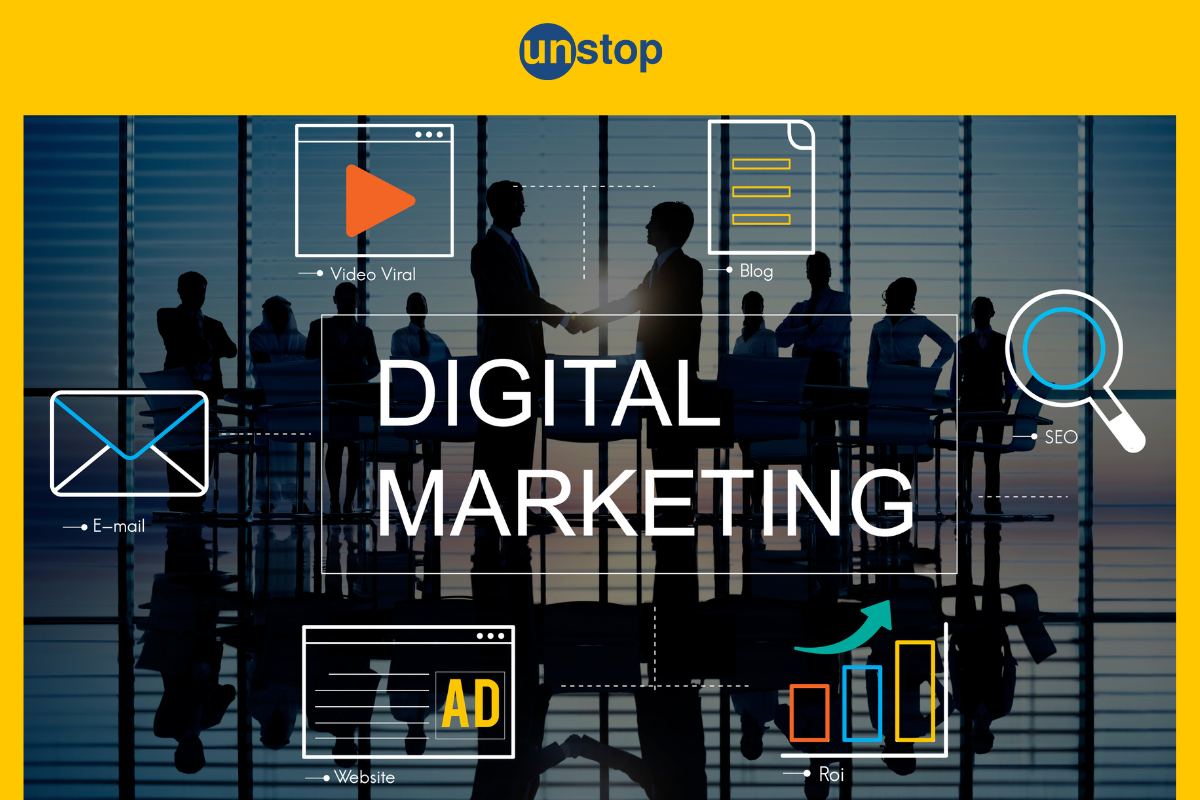
Digital marketing has become an integral part of how businesses interact with target audiences and attract them to buy the products or services offered. There has been an evident rise in the popularity of digital marketing and a shift away from traditional marketing techniques. With digital marketing becoming one of the most lucrative career options out there, the increasing job opportunities come with equally heavy competition. This means you will need to cross a lot of hurdles to get your dream job. But don't worry! Our list of digital marketing interview questions and answers will help you not only pass that digital marketing job interview but do so with flying colors.
The questions listed here cater to all experience levels, including questions for freshers and all digital marketing segments. We will begin with general digital marketing interview questions and answers and then move on to discuss segment-specific digital marketing questions. So let's get started.
Understand Brand Management like never before! Book your slot at unbelievable price!
General Digital Marketing Interview Questions & Answers
Q1. Briefly explain what is digital marketing.
Digital marketing refers to advertising on digital avenues like computers, phones, tablets, or other electronic devices. Some common examples of digital marketing tools are online video, display ads, search engine optimization (SEO), search engine marketing (SEM), paid social media ads (like Google Adwords), social media marketing (SMM), and so on. This is in stark contrast with traditional marketing tools like magazine advertising, billboards, and direct mail.
Q2. What are the benefits of digital marketing over and above traditional marketing?
Some of the most important benefits of digital marketing over and above the traditional methodology are:
- With the consumer shift towards digital media sources and greater internet penetration, digital marketing has become a go-to choice for most businesses.
- It is much more cost-effective than traditional marketing.
- There is direct interaction with the target audience.
- It is easier to collect data, conduct analysis, and draw inferences to build a future digital marketing strategy.
- Gives the target audience easier access to exhaustive information about the business and its products.
- Allows real-time optimization and performance analysis which further helps direct efforts toward increasing return on investment (ROI).
Q3. Can you explain the concept of conversion optimization?
Conversion optimization is the process of improving the performance of a website or landing page to increase the number of visitors who take a desired action, such as making a purchase or filling out a form. It involves analyzing user behavior, identifying areas of improvement, and implementing changes to optimize conversion rates.
For example, a clothing retailer may use conversion optimization techniques to test different variations of their website's checkout process, such as simplifying the form or adding trust signals, to increase the number of completed purchases. This data-driven approach helps businesses maximize their return on investment by turning more website visitors into customers.
Q4. Define and explain two categories of digital marketing.
The two categories of digital marketing are- inbound marketing and outbound marketing. The features/ differences are:
| Inbound Marketing | Outbound Marketing |
|
|
Q5. What are the different types of digital marketing?
Every aspiring digital marketer must know the answer to this digital marketing interview question. The different types of digital marketing are:
- Search Engine Marketing (SEM)
- Search Engine Optimization (SEO)
- Social Media Marketing (SMM)
- Content Marketing
- Email Marketing
- Affiliate Marketing
- E-Commerce Marketing
Q6. What are the most effective ways to increase traffic according to you?
- Paid search and ads,
- Display advertising,
- Social media marketing including ads, posting content on all platforms, etc.
- Search engine optimization (SEO),
- Content optimization & marketing,
- Guest blogging,
- Seeking backlinks and referral traffic,
- Email marketing.
Q7. What are the key metrics to track in a PPC (Pay-Per-Click) campaign?
In a PPC (Pay-Per-Click) campaign, there are several key metrics that should be tracked to measure the effectiveness and success of the campaign. These metrics include click-through rate (CTR), which measures the percentage of people who click on an ad after seeing it; conversion rate, which measures the percentage of people who complete a desired action, such as making a purchase or filling out a form; cost per click (CPC), which measures the average cost of each click; and return on investment (ROI), which measures the profitability of the campaign. By tracking these metrics, advertisers can optimize their campaigns and make data-driven decisions to improve their results.
Q8. What is the buyer's journey, and how does it relate to digital marketing?
The buyer's journey refers to the process that a potential customer goes through before making a purchase. It consists of three main stages:
- Awareness
- Consideration
- Decision
In the awareness stage, the buyer becomes aware of a problem or need they have. In the consideration stage, they research and evaluate different solutions. Finally, in the decision stage, they make a purchase decision.
Digital marketing plays a crucial role in the buyer's journey by providing relevant and informative content at each stage. Through digital channels such as social media, search engines, and email marketing, businesses can attract, engage, and convert potential customers, guiding them through the buyer's journey and ultimately driving sales.
Q9. How would you handle negative comments or reviews on social media platforms?
In handling negative comments or reviews on social media platforms, it is crucial to respond promptly and professionally. Firstly, I would carefully read and understand the comment or review to address the specific concerns raised. Then, I would acknowledge the customer's feedback and apologize for any inconvenience caused. Offering a solution or asking for more information to resolve the issue demonstrates a proactive approach. It is also essential to maintain a calm and respectful tone throughout the interaction.
For example, Zomato has a strong social media presence and actively engages with its customers on platforms like Twitter and Instagram. When negative comments or reviews are posted about Zomato's services or restaurants on social media, the brand takes a proactive approach in addressing them. They respond to each comment individually, acknowledging the customer's concerns and offering a solution or explanation.
This personalized approach shows that Zomato values its customers and is committed to resolving any issues they may have. In addition to addressing negative comments publicly, Zomato also takes the conversation offline by asking customers to direct message them with more details. This allows for a more private and personalized conversation, where the brand can gather more information and work towards a resolution.
Q10. How do you choose the right social media platforms for a business?
Choosing the right social media platforms for a business involves considering several factors. First, it's important to identify the target audience and understand which platforms they frequent the most. For example, if the target audience is primarily young adults, platforms like Instagram or Snapchat may be more effective.
Additionally, it's crucial to assess the nature of the business and the type of content that will be shared. Some platforms, like LinkedIn, are more suitable for professional networking and B2B interactions. Finally, it's essential to evaluate the resources and capabilities of the business to effectively manage and maintain a presence on the chosen platforms. By considering these factors, businesses can make informed decisions and maximize their social media impact.
Q11. List important tools for digital marketing.
| Digital Marketing Tools | ||
|
|
|
This brings us to the end of the section on general digital marketing interview questions and answers. The next step is to get into the nitty-gritty and explore segment-specific digital marketing questions. We will begin with the topic that we are sure you are well aware of and know a lot about, yes you've guessed it right- the SEO segment. So go ahead and check out the top 19 SEO digital marketing interview questions and answers listed in the section below.

SEO Digital Marketing Interview Questions & Answers
Q12. What do you understand by SEO and what does it entail?
SEO stands for search engine optimization, and it refers to the practice wherein all the content on a website, app, adverts, etc. is optimized in a way that it ranks higher on search engine results. This translates into improved quality and quantity of traffic to the respective portal, and also higher visibility in front of search engine users.
Q13. How does SEO differ from SEM? Explain.
Search Engine Optimization (SEO) - This refers to the practice of optimizing the content on a website/ portal to make it rank higher in organic search results (i.e. not paid).
Search Engine Marketing (SEM) - This is the wider term that includes organic ranking (i.e. SEO/ non-paid ranking) as well as inorganic ranking (i.e. PPC, paid ads, etc).
Q14. How do you address issues related to duplicate content in SEO?
When addressing issues related to duplicate content in SEO, it is crucial to ensure that each page on your website has unique and valuable content. To avoid duplicate content, you can use canonical tags to indicate the preferred version of a page, and redirect duplicate URLs to the original page.
Additionally, you can implement 301 redirects to consolidate duplicate content and prevent search engines from indexing multiple versions of the same page. Regularly monitoring your website for duplicate content and taking necessary actions to resolve it will help improve your website's SEO performance and prevent any penalties from search engines.
Q15. Can you discuss the impact of voice search on SEO?
Voice search has had a significant impact on SEO. With the rise of voice assistants like Siri, Alexa, and Google Assistant, more and more people are using voice commands to search for information online. This has led to a shift in the way search engines deliver results, as voice search queries tend to be more conversational and longer than traditional typed searches. As a result, SEO strategies need to adapt to optimize for voice search. This includes using natural language in content, focusing on long-tail keywords, and optimizing for local search.
Voice search also emphasizes the importance of featured snippets, as these are often read aloud by voice assistants. Overall, voice search has changed the SEO landscape, and businesses must adjust their strategies accordingly.
Q16. What is the difference between a Do-Follow link and a No-Follow link?
Do-Follow link: This attribute allows the crawlers/search engine to follow the link tagged and in doing so it passes on some of the link juice from the original portal to the other one. A Do-Follow link looks something like this-
<ahref=”http://www.XYZ.com/”>Anchor Text</a>
No-Follow link: This attribute, as the name suggests, tells the crawlers/ search engines not to follow the link tagged. This prevents the link juice from being passed on to the other website. A No-Follow link looks something like this-
<ahref=”http://www.XYZ.com/” rel=”nofollow”>Anchor Text</a>
Q17. What are backlinks and why are they important?
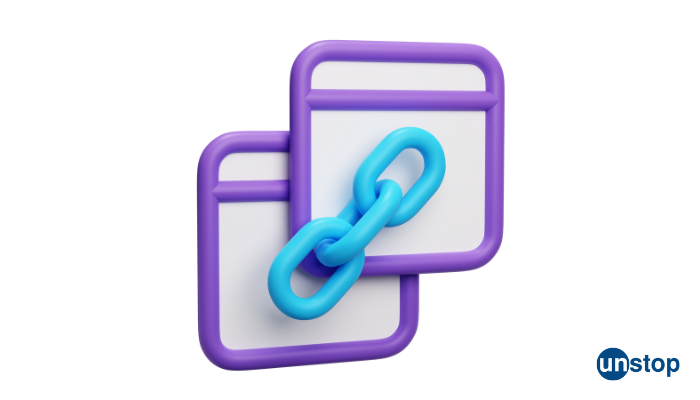
Backlinks, also known as incoming or inbound links, are created when some website links to your website or webpage through any content format. Essentially, the other website is giving you a backlink, say, somewhat like an incoming external link. They are extremely important for SEO as they indicate a 'vote of confidence' i.e., signify that some other website is vouching for your content and hence the website as a whole. They increase incoming search traffic/ referral traffic, improve domain authority and credibility, and also organic ranking.
Q18. What are meta tags, meta descriptions, and titles? Why are they important?
Meta tags and titles are a summary of the respective web page/ piece of content. This summary (and essentially these tags) is important because it determines what your content looks like in SERP results. Attractive tags, titles, and descriptions imply that more users will be inclined to click through and visit your content, thus increasing impressions, CTR, engagement, traffic, etc.
Q19. How are short-tail keywords different from long-tail keywords?
The primary difference between short-tail and long-tail keywords is that the former contains 3 words or less, while the latter contains more than 3 words. Long-tail is also more targeted and less broad in comparison to short-tail keywords. It is ideal to use a mix of both these for keyword optimization, however, long-tail keyword optimization is more impactful.
Q20. What is Google Analytics?
Google Analytics is a web analytics tool provided by Google that helps website owners track and analyze their website's performance. It provides valuable insights into user behavior, traffic sources, and conversion rates. With Google Analytics, website owners can measure the effectiveness of their marketing campaigns, understand which pages are performing well, and identify areas for improvement. This data-driven approach allows businesses to make informed decisions and optimize their website for better user experience and increased conversions.
Some of the applications of Google Analytics include tracking website traffic, monitoring e-commerce performance, analyzing audience demographics, and evaluating the success of online advertising campaigns.
Q21. Can you describe the difference between black hat and white hat SEO techniques?
Black hat and white hat SEO techniques refer to different approaches used in search engine optimization. Black hat techniques involve unethical practices that aim to manipulate search engine algorithms and gain higher rankings quickly. These techniques may include keyword stuffing, hidden text, and link farming.
White hat techniques are ethical and focus on providing valuable content and improving user experience. White hat techniques include creating quality content, optimizing website structure, and building organic backlinks. While black hat techniques may provide short-term gains, they can result in penalties from search engines. White hat techniques, although slower, are more sustainable and help in building a strong online presence.
Q22. What is the difference between a 301 redirect and a 302 redirect?
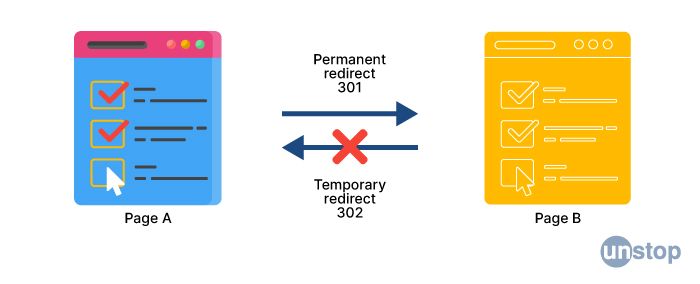
A 301 redirect is used to send users and search engines to a new location/ address when a page has permanently been moved to that new location. This is a permanent redirect. A 302 redirect, by comparison, is a temporary redirection that sends users/ search engines to a new location/ address for a limited period of time. Many people confuse these two redirections which can lead to issues in the website and its performance. So take note of the difference and make sure that you give the right answer when faced with this digital marketing interview question.
Q23. What is mobile-first indexing, and why is it important?
Mobile-first indexing is used in reference to a website that has a responsive design i.e., it alters when being viewed on a mobile in comparison to a laptop. Websites that have this feature are said to give priority to mobile-first indexing. As a result, the Google/ search engine algorithm ranks these websites higher in comparison to the ones that are not responsive. This indexing also factors in how well your website performs on mobiles, its quality, speed, etc.

Q24. What must you do to avoid the penalties on your website?
The few things that you must do to avoid penalties are:
- Follow white hat techniques and steer clear of black hat SEO, like keyword stuffing, overlinking, poor links, etc.
- Ensure that your web design is simple, user-friendly, and also mobile-friendly.
- Use a 301 redirect for URLs and not a 302 redirect.
- In Google Console, choose a preferred domain as it helps redirect spiders to crawl pages in different ways.
Q25. Is video content useful in SEO or in improving engagement/increasing traffic?
Video content is a powerful tool for SEO, engagement, and traffic growth. Search engines favor websites with diverse content, and videos contribute to improved rankings. Visually engaging videos captivate audiences, prolonging their time on your site and reducing bounce rates. Shared on social media, videos become traffic magnets, boosting your online presence. As a versatile medium, video caters to varied learning preferences, enhancing the overall user experience. To leverage its full potential, optimize videos with relevant keywords, ensuring they're informative and shareable, driving increased visibility and audience interaction.
Q26. What is local SEO, and how can you optimize your site for it?
Local SEO refers to optimizing your website to rank higher in local search results. Any business/ entity with a physical location or fixed operational geography can benefit from this type of SEO. The idea here is to optimize for the keywords that the target audience within a certain diameter of your location/ geographical bound is searching for, thus bringing enhanced traffic to your site, better conversion for your business, continuous growth, etc.

The first step to optimizing your app/ site locally is to get the 'Google My Business' listing. From there, you need to optimize your content by including positive reviews from customers, optimizing for voice search, getting visible citations, check-ins, and more.
Q27. How important is web design from an SEO point of view?
User experience is one of the important factors that affect your engagement with target customers and search engine result rankings. This experience is directly related to web design. So quality web design not only improves the experience your visitors have on your website but also helps you rank higher in SERP.
Q28. What is the purpose of alt tags/ texts?
Image alt tags and text are primarily for users/ visitors who do not have the ability to see the images you have used or any visitor who is using an image reader. They are helpful as they describe the contents of the image to such users and improve their experience on your site. It is also important to use keywords in these tags to improve ranking and convey the message clearly to the visitor.
Q29. Where should one insert keywords to improve the ranking of a webpage?
The key areas for keyword insertion to improve ranking are:
- URL
- Meta Title
- Meta Description
- H1/ H2 headers
- Image Alt Tag
- Text Content (especially in the first and last 100 words of the content).
Q30. What are bad links?
The term 'bad link' refers to links that not only don't add a positive value to your site but can also lead to penalization by association. These include links that are:
- From untrustworthy/ spammy websites.
- Have spammy comments/ reviews.
- Unrelated to your content.
- Low-quality or insecure,
- Outdated/ inactive, and
- Resulting in anchor text duplication or overlinking.
Check this out - Mastering Interviews For Marketing & Sales Roles
Digital Marketing Interview Questions & Answers: SEM
Now that we have covered SEO digital marketing questions & answers, we can move on to the next section. In this section, we will focus on SEM, i.e., search engine marketing. To begin with, it is important to note that SEM is a wider section that encompasses both SEO and paid search techniques. Since we have already covered almost all of SEO in the section above, here we will focus more on the paid ads segment of SEM. Below is the list of the top 21 SEM digital marketing interview questions & answers.
Q31. What are the main components of SEM?
- Pay-per-click (PPC) advertising
- SEO
- SMM (i.e., social media marketing)
- Content quality & copywriting
- Web analytics
Q32. What is better- SEO or PPC?
SEO activities are directed toward increasing the organic ranking and traffic to your website/ portal/ app. In contrast, PPC refers to paid activities wherein you purchase space to rank better in search engine results and increase traffic/ engagement this way. This brings in inorganic traffic. Due to this foundational difference between the two, we cannot say if one is better than the other. Both these formats are essential, and most businesses try to strike the perfect balance between the two in their marketing methodology.
Q33. Mention important components of a PPC campaign. What makes for an effective PPC campaign?
The main components of PPC are:
- PPC landing page
- Keywords
- CTA (Call To Action)
- Ad copy
- Bidding amount & strategy
Some key points to keep in mind to build a solid PPC campaign are:
- Add multiple keywords to increase the reach.
- Review keywords regularly and remove non-performing keywords.
- Split ads into smaller ones to increase CTR.
- Add negative keywords to improve the overall efficiency of keywords.
Q34. Mention some popular PPC tools you are familiar with.
- Optimizely
- SEMrush
- Keyword Planner
- Optmyzr
- Unbounce
- Google Ads
- SpyFu
- SE Ranking
- Google Analytics
- AgencyAnalytics
Q35. Mention the features of a good PPC landing page.
A good PPC landing page must have the following:
- Impactful & catchy headlines,
- Induce trust and loyalty.
- The copy must be persuasive and relatable.
- Engaging content in the form of images, videos, etc.
- A balance between empty/ white space and content.
- A clear and strong CTA.
- Flow in the design.
Q36. Explain CPC vs EPC.
CPC stands for cost per click, while EPC stands for earning per 100 clicks. The former of these refers to the cost you pay for every click when using paid ad tools like Google Ads. And the latter is generally used in affiliate marketing to measure the amount an affiliate can earn for every 100 clicks they generate.
Q37. What is Google AdWords and how does it work?
It is safe to say that this is one of the most commonly asked digital marketing interview questions because Google Ads is an important tool that all digital marketers must be familiar with. Here is what the answer to this question looks like-
Google Adwords is the online advertising tool/ service/ platform by Google. It offers a variety of features to help digital marketers create ads and post them to compete with others in the market. The broad idea behind this PPC tool is companies get their ads ranked by bidding on keywords and, hence try to reach out to their target audience. When used wisely, this tool can have an extremely positive impact on the bottom line.
Q38. How are Google Ad ranks calculated? How to improve your Ad rank?
As per Google, ad ranks are calculated by assessing the bid amount, ad quality at the time of the auction (like relevance, expected CTR, landing page, etc.), auction competitiveness, ad rank thresholds, etc. There is no fixed set of rules to ensure that your ad will rank higher than others. A digital marketer must ensure that the quality of their ads is good and that the content is original and high-quality. They must also minimize the load time for their landing page and website.
Q39. What is Ad Scheduling?
Ad scheduling is an amazing feature that allows marketers to select a fixed number of hours in a day during which they want the ads to be visible to the target audience. They can also change the bids for ads during certain hours. Google Ads allows you to make 6 ad schedules per day for each campaign in an account.
Q40. Mention the formats in which you can publish ads via Google Ads.
- Text Ads
- Image Ads
- Video Ads
- Responsive Display Ads
- Call-only Ads
- Showcase Shopping Ads
- Product Shopping Ads
Q41. What could lead to the rejection of an Ad?
Factors that may lead an ad to be rejected are:
- Use of prohibited content or engaging in prohibited practices.
- Use of restricted content.
- Technical/ editorial quality issues.
Q42. What is RLSA? How does Google AdWords Remarketing work?
RLSA stands for Remarketing List for Search Ads, and it is a feature offered by Google wherein you can re-serve targeted ads to an audience that has previously visited your site. You serve these ads in the form of queries for related keywords and other Google Display Network sites. Remarketing works in two ways, one by adjusting bids for users who are searching for the keywords, and the other is by setting the search ad group to be triggered to show only for a user who is in the remarketing list.
Q43. Mention some common Google search Ad extensions.
- Callout extension
- Call extension
- Sitelink extension
- Promote extension
- Structured snippet extension
- App extension
- Affiliate location extension
Q44. Explain page views vs sessions in reference to Google Analytics.
Page view refers to the number of times a page of your website is loaded by a user. It counts every single time it is loaded as a single page view. In contrast, a session includes all the actions the user takes for the entirety of that respective visit till the time they leave your website/ portal/ app.
Q45. What are conversion rates and how can you improve them?
Conversion rate refers to the percentage of website/ app users who complete an action from the total number of visitors the portal receives. In other words, it is the ratio of actual customers to total visitors. Ways to improve conversion rates are-
- A/B testing of ads and different elements of the website.
- A/B testing of landing pages.
- Add more specific as well as negative keywords.
- Use the conversion tracking tool to collect data and optimize your ads accordingly.
- Use search term reports to reach the right customer.
Q46. What if an ad is unapproved?
It is not uncommon for an ad to not get approval. If this happens to you the most important thing is to take the signs and start editing your ads. Improve the quality and ensure all other technicalities are met. Then, re-submit the ad and wait for the approval.
Q47. What is CTR and how to increase it?
CTR is one of the key performance indicators in analytics and it stands for click-through rate. It is the ratio of the number of clicks attained to the total number of impressions. Some ways to improve your CTR are-
- Write a great meta title, H1, & meta description.
- Optimize for keywords.
- Use interactive images and also hashtags if possible.
- Write an impactful and clear CTA.
Q48. What is a CTA and how to write a great one?
CTA stands for 'Call to Action', and it is a phrase that pushes the visitor to take the desired action. For example, 'Buy now!', 'Check it out!', 'Call now!', etc. A great CTA must be direct, clear, concise, yet impactful, and must prompt immediate action.
Q49. What are Webmaster tools?
Webmaster Tools are a collection of Google web utilities that help ensure that a site is Google-friendly. Website owners can use these Webmaster tools to collect data on incoming search traffic, view crawling errors/ reports, issue crawl/ index requests, and more. They can then use the data to improve the quality and performance of their website.
Q50. What is Quality Score and how is it determined?
Quality score is a term used in reference to search ads/ Google ads. The score ranges between 1 to 10 and it gives the user/ marketer an idea about the quality of their ad. Ads with higher quality get ranked higher and vice versa. Google determines the score based on historical impression data for exact searches of keywords, expected CTR, and landing page experience.
Q51. Explain Google AdWords vs. AdSense
A lot of people get confused between Google AdSense and AdWords, with many assuming them to be the same thing. But that's not true the difference between Google AdSense and AdWords are:
| Google AdWords | Google AdSense |
|
|
This compiles our section on SEM digital marketing interview questions. SEM is one of the most widely known segments of digital marketing, but there are a few more important segments that will discuss ahead. The next section is email marketing, in which we have listed 14 digital marketing interview questions & answers in reference to email marketing. What are you waiting for?
Digital Marketing Interview Questions & Answers: Email Marketing
Q 52. Do you think email marketing works?
Email marketing works by sending targeted emails to a group of subscribers with the goal of promoting products or services, building brand awareness, and driving customer engagement. Here is how it works:
-
Building a subscriber list: Marketers collect email addresses from interested individuals through opt-in forms on websites, landing pages, or social media.
-
Segmenting the list: Subscribers are categorized based on demographics, preferences, or past interactions to ensure relevant content is delivered.
-
Creating compelling content: Engaging and personalized emails are crafted to capture the attention of subscribers and encourage them to take action.
-
Automating campaigns: Email marketing platforms allow marketers to set up automated campaigns triggered by specific actions or dates to deliver targeted messages at the right time.
-
Testing and optimizing: Marketers analyze email open rates, click-through rates, and conversions to identify what works and make improvements to future campaigns.
-
Complying with regulations: Marketers must adhere to data protection laws, such as obtaining consent and providing an option to unsubscribe, to ensure compliance with regulations like GDPR.
Overall, email marketing is an effective way to reach a targeted audience, build relationships, and drive business growth.
Q53. Mention things to keep in mind to increase the CTR for your emails and push subscribers to open them.
- Write a good, descriptive, yet concise subject line.
- Make sure that the email is mobile-friendly.
- Proofread the copy.
- Use preview text.
- Make email more engaging by using images.
- Use a strong CTA and place it optimally.
- Perform A/B testing if needed.
Q54. Mention some ways to recapture inactive customers.
- Keep up a regular schedule for sending emails without overwhelming the customer.
- Personalizing emails.
- Engaging customers by conducting quizzes, competitions, etc. employing other gamification techniques.
- Ask customers for opinions and feedback. Use them to write better emails.
Q55. Define Open Rate, Response Rate, and Forward Rate.
Open Rate- This is the ratio of recipients who opened the email to the total number of recipients. The formula is,
Open rate = (Emails Opened/ Emails Sent)- Bounce Rate
Response Rate- This is the ratio of the number of recipients who complete an action to the total number of recipients. The formula is,
Response rate = Number of actions completed/ Number of total recipients
Forward Rate- This is the ratio of the number of shares to the total recipients of an email. The formula is,
Forward rate = (Number or shares/Total recipients)*100
Q56. What is persona segmentation? Mention some different ways to segment buyer personas.
Persona segmentation refers to the act of identifying and grouping similar buyer personas and studying their behavior as a collective thereon. This is one of the most essential and challenging tasks that a digital marketing professional must carry on. This segmentation helps in determining the best way to market your product/ service to that persona and how to persuade them to complete an action. There are different ways of categorizing your buyers based on demographics, lifestyle, user behavior, engagement cues, preferred online/ social media channels, etc.
Q57. Mention subject line best practices.
- Personalize the subject.
- Try to include a number or an emoji.
- Make it persuasive or create promptness/ urgency in the subject line.
- Try to fit everything into a few words; don't make it very long.
- Revise the copy and make sure there are no grammatical errors.
Q58. What are the qualities of a perfect marketing email?
A perfect marketing email must be/ have:
- A catchy, interesting, and clear subject line.
- Defined format with clear headers, body content, CTA, and footer.
- Easy to read, compelling, and flow smoothly.
- Clearly define/ prompt the action needed.
- Relevant to the reader/ recipient.
- Mobile-friendly.
- Consistent with the brand.
- The right tone to maintain friendly dialogue with the recipient.
Q59. What must you do to prevent your emails from landing in spam?
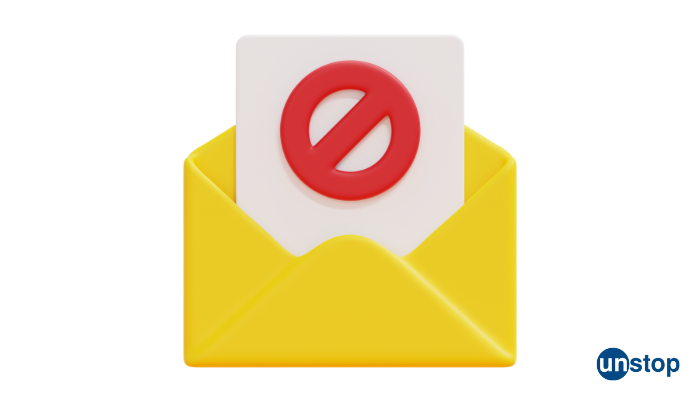
- Ask subscribers to 'whitelist' your address.
- Add an 'unsubscribe' option.
- Adhere to the CAN-SPAM Act guidelines.
- Clean up your email address.
- Use credible email marketing tools/ platforms.
- Proofread the copy and ensure quality.
- Ensure that your subject is not spammy i.e., unreliable or too over the top.
- Use spam check tools to ensure it is spam-proofed.
- Send regular emails/ follow a schedule.
Q60. What is the ideal length for marketing emails?
Every digital marketing professional across the board follows no fixed definite. But there is a rule that a brief copy will always perform well in comparison. This is why the ideal length for a marketing email should remain between 125-200 words.
Q61. How can you grow your list of subscribers?
Some marketing techniques/ ways to increase your list of subscribers are:
- Making an offer that they can't refuse, i.e., a compelling offer.
- Create giveaways, referral programs, sweepstakes, etc.
- Offer unique and interesting content.
- Simplify the form where users feed in their email addresses i.e., make it simple/ just a click away.
- Encourage subscribers to forward your emails/ newsletters.
- Be prompt with your responses like immediately welcoming new subscribers with thank-you emails.
- Leverage social media to add subscribers.
- Make use of email preview. You must also ensure that there are no errors in the preview. Use any of the numerous online proofreading tools available out there.
Q62.What is the best day/ time to send marketing emails? And how often should you send them?
While the exact time of sending marketing emails depends on your target audience, data shows that the best time to send these emails is in the morning. It is suggested that emails sent between 9 AM and 12 AM have the highest open rate. Afternoon time is also good for sending out emails. Again, there is no one-size-fits-all formula, but in reference to the frequency of emails, make sure that you are not overwhelming your subscribers.
Q63. Are you familiar with the CAN-SPAM law?
The CAN-SPAM Act is a law passed to protect subscribers/ customers against unsolicited and irrelevant content shared via electronic emails. The act stipulates rules/ regulations that the sender of commercial emails must adhere to. It also lists penalties for violating said rules.
Q64. Mention the benefits of Email Automation.
- Improves workflow by improving the level of efficiency in task completion.
- This marketing tactic helps in customer retention by keeping them engaged.
- Makes for a positive user experience and induces a feeling of loyalty.
- Saves time, and
- Limits the scope of errors.
Q65. What are the disadvantages of Email Marketing?
- Some people consider these emails spam and are not receptive to them.
- You can only reach out to those people who are either customers or who have subscribed to the emails.
- It can be very time-consuming when not automated.
- It can be a costly affair.
- Email typos and bad design can put off recipients/ customers.
- Rigid spam laws and international regulations are a cause for concern.
These are some of the digital marketing questions that you might come across in digital marketing job interviews. A lot of people believe that email marketing is losing relevance, but they fail to see its tremendous potential. With the closing of email marketing-related digital marketing interview questions & answers, it's time to move on to the next topic, which is content marketing.
Check this out: Resume Prep with top Recruiters & Industry Experts
Digital Marketing Interview Question & Answers: Content Marketing
We are sure that you must have heard of the phrase 'Content is King'. But are you familiar with the phrase- 'Content isn't the King, it is the Kingdom'. Well, both stress the significance of content today, making it one of the most important forms of marketing that every business owner/ marketer must take note of. Here are some digital interview marketing questions & answers for this segment that will surely help you land your dream job if you are interested in content marketing. Let's get started!
Q66. What is content marketing?
Content marketing is the process of creating and distributing relevant content to attract, acquire, engage, and retain customers. Content marketing includes marketing content via blog articles, white papers, eBooks, etc.
Q67. What qualifies as content?
This is one of the most common digital marketing questions thrown at content marketers. The reason behind this is many people live with the misconception that content means only written information, more precisely blogs. But the truth is, content marketing encompasses any valuable information which may be conveyed in any format or by any medium.
Q68. What are the types/ formats of content one can create?
Some popular content formats you can use to meet your marketing goals include blogs, videos/ informative videos, slide shares, infographics, PDFs, articles, newsletters, podcasts, ebooks, white papers, and so on.
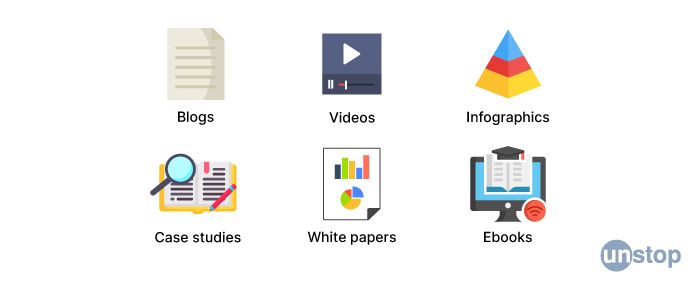
Q69. Mention the advantages of content marketing.
- Integral to boost traffic to your website/ app/ portal.
- Important for ranking and increasing visibility.
- Instills trust in users/ visitors and establishes your industry authority.
- Helps in creating brand awareness/ familiarity.
- Helps engage and connect with your audience through multiple formats.
- Works in your favor by retaining customers.
- Helps generate leads and also increase conversions.
Q70. What is a content calendar and why should you use one?
A content calendar refers to a written schedule or plan describing which content has to be published and when. It helps you implement your content strategy by feeding the right data to a well-defined audience at the right time. A typical content calender must include the pieces you want to publish, along with their status, time/ date to publish, and planned promotional activity/ partnerships if any.
You should use a content calendar because:
- It helps you track content-related tasks and also ensures that you complete all of them.
- Collaboration within the team and with other teams is easier when you are using a calendar.
- It helps you get a bird's eye view and also look at the bigger picture.
- Assists in future planning, and
- Helps track the progress and also assess the return on investment.
Q71. List the steps for developing a content marketing strategy.
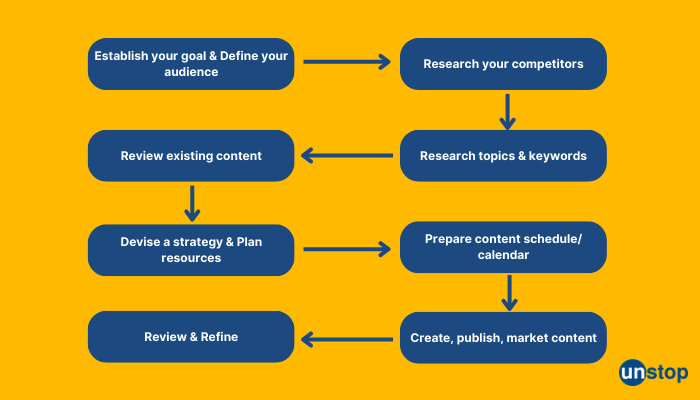
Q72. What role does storytelling play in content marketing?
Storytelling plays a crucial role in content marketing as it helps to engage and connect with the audience on a deeper level. By incorporating storytelling techniques, brands can create narratives that resonate with their target audience, making the content more relatable and memorable.
Storytelling also allows brands to convey their values, mission, and brand personality in a more authentic and compelling way. It helps to evoke emotions, build trust, and establish a strong brand identity. Overall, storytelling in content marketing helps to captivate the audience's attention, differentiate the brand from competitors, and ultimately drive customer engagement and loyalty.
Q73. Why use keywords in content marketing?
Using keywords is important because they:
- Help target the right audience.
- Help your content rank and give it more visibility.
- Directs interested customers to your business, thus increasing conversion rate.
- Facilitate strategic content creation by considering which keywords are important and have high search volume.
- Keyword analysis helps ascertain market trends and get insight.
Q74. What factors determine the tone of your content?
There are three primary factors that you must consider when deciding on the tone of your content. They are:
- Your Brand- The tone of your content must be in cohesion with your brand image and profile.
- Target Audience- Segment your audience and adjudge the best tone to converse with them through your content.
- Mode/ Channel- The tone varies for different platforms or channels. For example, your social media voice is not the same as your boardroom voice.
Q75. How do you promote your content after it goes live?
- Set up push notifications.
- Post and promote the content on all social media platforms.
- Send out broadcast messages or newsletters.
- Promote the content with the help of paid ads.
- Leverage influencer marketing to promote your content.
Q76. Explain B2C vs B2B content marketing.
| B2B Content Marketing | B2C Content Marketing |
|
|
Q77. Which is better: short-form or long-form content?
There is no fixed or definite answer to this question since both long-form and short-form content have different places and importance in content marketing services. While a common misconception says that the longer the content, the better will be the performance, note that this does not hold 100% of the time. You will instead need to take a strategic approach when deciding which form of content to use. And the decision will depend on your target audience, the purpose of content, the distribution channel, intent, the end goal, and what is working for others in the industry.
This brings us to the end of the digital marketing interview questions & answers in reference to content marketing. We have covered all the important segments of digital marketing and now are left with only one section.
Also Read: Digital Marketing Resume - Format And Best Examples
Digital Marketing Interview Questions & Answers: Social Media Marketing (SMM)
Social media marketing is at the center of most of our lives today, and it forms an integral part of digital marketing that you must be familiar with. Below is a list of 7 top digital marketing interview questions in the SMM segment, hurry up and get started.
Q78. What is A/B testing in reference to Ads?
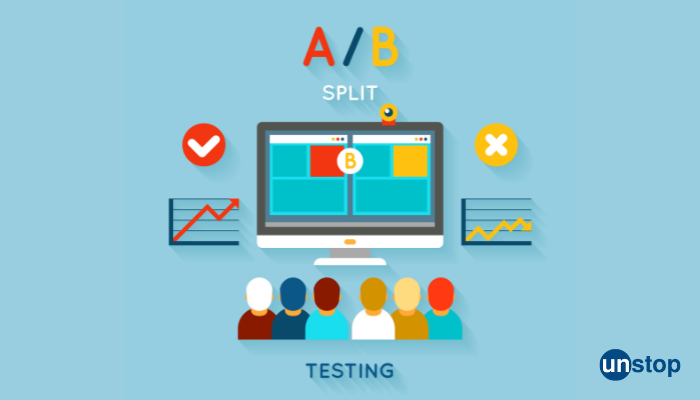
A/B testing is a method used in marketing and product development to compare two versions of a web page or app to determine which one performs better. It involves dividing users into two groups: one group sees the original version (A), while the other sees a modified version (B) with a single change. By measuring user behavior, such as click-through rates or conversion rates, the impact of the change can be evaluated.
For example, an e-commerce website could test two different button colors to see which one leads to more purchases. A/B testing allows businesses to make data-driven decisions and optimize their products or marketing strategies.
Q79. How to capitalize on the holiday season through social media marketing?
Social media marketers can make full use of the holiday season by:
- Creating holiday-specific relevant content.
- Add to the festivities by launching giveaways, festive contests, and more such gamified engagements.
- Prepare holiday greeting creatives for social media and share them throughout your SM and advertising network.
- Launch special offers or promotions, e.g. festive discounts.
- Prepare all the creatives/ content in advance and schedule them so that you don't miss out on this opportunity.
- Also, try to personalize the greetings or any correspondence you send out in any way possible.
Q80. What are some key points to help prepare effective Ad creatives?
Ads are an investment in marketing and it is important to get them right so that you get a good return on investment. A few points that will help you achieve this are:
- Choose a creative that is eye-catching and instantly grabs attention.
- Select or segment the target audience and make sure the ad creative speaks to them.
- The creative should coincide with your brand and fit into your marketing methodology so that it helps you fulfill your marketing goals.
- Create a powerful and catchy tagline/ copy that conveys your brand message clearly with a prompt CTA.
- Convey how you can help them overcome a paint point, either through copy or just the creative.
- Your creative and copy must be persuasive, promotional, consistent with the brand, and original, all at the same time.
- The ad should also strike a chord with the audience and be memorable for better retention.
Q81. What is the cost of social media marketing and what is the return on investment?
The cost of social media marketing can vary greatly depending on various factors such as the size of the business, the goals of the campaign, and the platforms used. Some businesses may choose to handle their social media marketing in-house, which would involve the cost of hiring and training staff, as well as the cost of tools and software. Other businesses may opt to outsource their social media marketing to agencies or freelancers, which would involve paying for their services.
In terms of return on investment (ROI), social media marketing can be quite effective in generating leads, increasing brand awareness, and driving sales. However, calculating the exact ROI can be challenging as it depends on various factors such as the specific goals of the campaign, the industry, and the target audience. To measure the ROI of a social media marketing campaign, businesses can track metrics such as website traffic, engagement rates, conversion rates, and sales attributed to social media efforts.
Q82. Is social media marketing more efficient for the B2C model or the B2B model?
Social media marketing is equally efficient for both B2C and B2B models when done right. That being said, the marketing goals, strategic approach, marketing methodology, and content itself will differ greatly between the two. For example, the social media posts for the B2C model will be more light-hearted and jovial in comparison to the posts for the B2B model, and so on. But this does not alter the fact that social media is a great tool for businesses to connect with their customers (whoever they may be).
Q83. How would you use LinkedIn to meet your marketing goals?
Some ways to use LinkedIn for marketing to ensure healthy traffic from this source are:
- Firstly, create a company page, fill out all the details, and keep it up to date.
- Post LinkedIn-relevant content such as job postings, job descriptions, informative videos, product updates, company culture/ interaction videos, etc.
- It is important to post new, original and interesting content regularly.
- Update your personal profile and encourage employees/ colleagues to do the same.
- Actively take part in LinkedIn communities to increase visibility and create brand awareness.
- Be prompt in your responses and keep the engagement level high.
Here's something more for you! Read - How To Subtly Increase Your LinkedIn Visibility!
Q84. How can Twitter be used to meet marketing/ strategic goals?
Twitter is one of the most popular social media platforms out there, and it must be a part of your marketing action plan. Some ways to use Twitter for marketing are:
- First, get your account audited.
- Set clear goals and check out the competition.
- Build a proper marketing action plan and set up an advertising framework accordingly.
- Make use of all the latest features like trends, circles, communities, spaces, lists, etc. Don't miss out on anything!
- Plan tweets, posts, and other creatives and build the marketing pipeline, and also prepare a content calendar.
- Analyze your performance growth and build a future plan based on those insights.
Digital Marketer in Today's Business Landscape
In today's fast-paced business landscape, the role of a digital marketer is more crucial than ever. With the increasing reliance on technology and the internet, businesses need to establish a strong online presence to stay competitive. A digital marketer plays a vital role in helping companies navigate the digital realm and reach their target audience effectively.
Responsibilities of a Digital Marketer
- Developing and implementing digital marketing strategies
- Conducting market research and competitor analysis
- Creating and managing online advertising campaigns
- Optimizing website content for search engines (SEO)
- Managing social media accounts and engaging with followers
- Analyzing data and generating reports on campaign performance
- Implementing email marketing campaigns and analyzing results
- Collaborating with designers and developers to create engaging content
- Keeping up to date with industry trends and best practices
- Monitoring and managing online reputation and customer reviews
Skills of a Digital Marketer
-
Analytical skills: A digital marketer needs to be able to analyze data and metrics to make informed decisions and optimize marketing strategies.
-
SEO knowledge: Understanding search engine optimization (SEO) is crucial for a digital marketer to ensure that websites and content rank well in search engine results.
-
Content creation: Digital marketers should have the ability to create engaging and relevant content across various platforms, including blogs, social media, and email marketing.
-
Social media management: Proficiency in managing social media platforms and utilizing them effectively for marketing purposes is essential for a digital marketer.
-
Email marketing: Understanding email marketing strategies and creating compelling email campaigns is a valuable skill for a digital marketer.
-
Conversion rate optimization: Knowledge of conversion rate optimization techniques helps digital marketers improve website performance and increase the number of visitors who take desired actions.
-
Copywriting: Strong copywriting skills are necessary for crafting persuasive and compelling marketing messages that resonate with the target audience.
-
Project management: Digital marketers often work on multiple projects simultaneously, so having strong project management skills is essential for staying organized and meeting deadlines.
Importance of Staying Updated with the Latest Trends in Digital Marketing
Digital marketing is an ever-evolving field where trends come and go rapidly. To succeed as a digital marketer, it is crucial to stay updated with the latest industry trends and advancements. This ensures that strategies remain relevant in an ever-changing landscape.
Staying informed about emerging technologies allows digital marketers to leverage new opportunities effectively. For example, with the rise of video content consumption on platforms like YouTube and TikTok, incorporating video marketing into campaigns has become increasingly important.
Moreover, keeping up with trends helps digital marketers anticipate changes in consumer behavior. By understanding how customers engage with online platforms, marketers can tailor their strategies to reach them more effectively.
Bonus: Here is a list of 7 Free Online Marketing Courses that will help you on your journey to becoming a successful digital marketer!
We hope the above article helped you brush up on the key concepts of digital marketing. We wish you the best for your job interview!
You might also be interested in reading:
An economics graduate with a passion for storytelling, I thrive on crafting content that blends creativity with technical insight. At Unstop, I create in-depth, SEO-driven content that simplifies complex tech topics and covers a wide array of subjects, all designed to inform, engage, and inspire our readers. My goal is to empower others to truly #BeUnstoppable through content that resonates. When I’m not writing, you’ll find me immersed in art, food, or lost in a good book—constantly drawing inspiration from the world around me.
Login to continue reading
And access exclusive content, personalized recommendations, and career-boosting opportunities.
Subscribe
to our newsletter
















Comments
Add comment